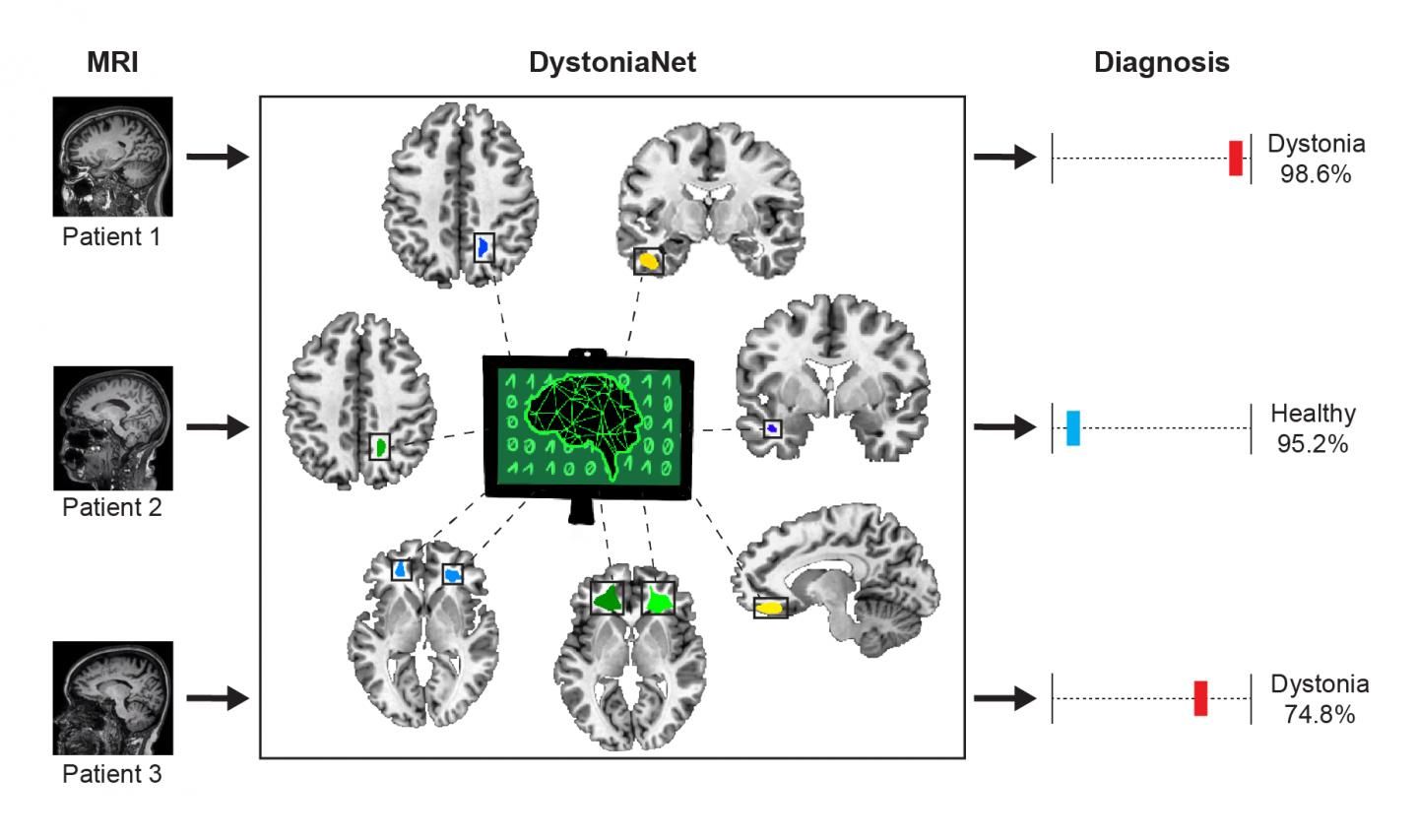AI Identifies Focal Dystonia Almost Instantaneously on MRI
The platform, dubbed DystoniaNet, was able to identify 3 varieties of focal dystonia in a matter of 0.36 seconds with almost 100-percent accuracy.
This article was originally published on Diagnostic Imaging's sister site NeurologyLive.
Pairing MRI with a new artificial intelligence (AI) based deep learning platform called DystoniaNet can identify patients with dystonia in under a second, new research has revealed.
According to investigators from Mass Eye and Ear in Boston, this tool can help providers truncate the time to diagnosis for this condition which causes involuntary muscle contractions that prompt abnormal movements and postures. Correctly identifying dystonia can sometimes take up to 10 years. They published their findings on Sept. 28 in Proceedings of the National Academy of Sciences (PNAS).
“We basically leveraged the advances made in deep learning and designed an architecture that was able to look at raw structural MRI and find a biomarker for dystonia that could help with the diagnosis of this disorder,” study author Davide Valeriani, PhD, postdoctoral research fellow in the Dystonia and Speech Motor Control Laboratory at Mass Eye and Ear and Harvard Medical School told NeurologyLive. “We specifically took an approach that could be easily clinically translated, which is why we used raw structural MRI. This kind of measure is what comes out directly from the scanner and is available to many clinicians in-clinic.”
Courtesy: Mass Eye and Ear

All told, when doing a comparison using MRI data from 612 individuals—220 healthy subjects and 392 with three types of isolated focal dystonia (laryngeal dystonia, n = 279; cervical dystonia, n = 59; blepharospasm, n = 54)—the DystoniaNet platform diagnosed the condition with 98.8-percent accuracy in a matter of 0.36 seconds. Specifically, it showed 98.2-percent accuracy in diagnosing laryngeal dystonia, 100 percent in diagnosing cervical dystonia, and 98.1 percent in diagnosing blepharospasm, while referring 3.5 percent of patients (n = 6) for further examination.
Given the platform's performance and the average length of time to diagnosis, it has potential to beneficial impact the movement disorder field, the team said.
Valeriani explained that the DystoniaNet platform takes the MRI and learns from the training algorithm developed from one of the largest dystonia datasets, and then uses this data-driven approach to identify the condition. It was developed over the last several years by Valeriani and co-author Kristina Simonyan, M.D., Ph.D., DrMed, director of laryngology research at Mass Eye and Ear, and was previously assessed in an analysis-driven marker evaluation.
“[The analysis-driven] results were quite encouraging, where we would have an accuracy between 71 percent and 81 percent correctly diagnosing dystonia, and research from other labs also has shown that similar analysis-driven biomarkers can be implemented for diagnosing dystonia” said Simonyan, who is also an associate neuroscientist at Massachusetts General Hospital and associate professor of otolaryngology, head and neck surgery at Harvard Medical School. “However, that was not good enough for us because that type of paradigm has to involve substantial data processing, which has been clinically challenging to do. Us clinicians just don’t have the luxury of several hours per patient to process their data. In a way, our study was designed to lessen the time burden on the clinician and to speed up the diagnosis.”
The performance of the biomarker and its DystoniaNet pipeline was consistently stable independent of the magnetic field strength (accuracy range, 98–100), MRI scanner vendor (accuracy range, 96.9–100), head coil (accuracy range, 95.2–100), T1-weighted image acquisition sequence (accuracy range, 98.3–100), or a data collection site (accuracy range, 97.6–100). The specificity was additionally confirmed with a third and supplementary independent dataset of 1480 healthy controls (accuracy, 96.9 percent; referral rate, 2.6 percent).
Simonyan noted that traditionally, this diagnosis is made based on clinical observations, and available literature suggests that that the agreement on dystonia diagnosis between clinicians using purely clinical assessments is as low as 34 percent, and with roughly 50 percent of the cases going misdiagnosed or under-diagnosed at a first visit.
It is estimated that 35 of 100,000 individuals have isolated or primary dystonia, though it is believed that this prevalence is underestimated due to the current challenges in diagnosis. Although Parkinson's disease or stroke can lead to the development of dystonia, the majority of isolated dystonia cases have no known cause and impact only a single muscle group in the body. Focal dystonia can lead to disability and problems with physical and emotional quality of life.
“In some sense, this provided us an opportunity to train this machine-learning algorithm to diagnose dystonia because we had a large available dataset of neuroimages,” Valeriani said. “But, we also made the development of DystoniaNet open to the possibility of extending it to other disorders. For example, we took away all the prognosis that’s required and just stared with raw structural MRI. Every patient could get that, and we have this data for many different disorders."
Currently, he said, the team is testing this on some other disorders with very promising results with approximately 80-percent accuracy. The goal is to determine how much the architecture will generalize to other disorders.
For more coverage based on industry expert insights and research, subscribe to the Diagnostic Imaging e-newsletter here.
What is the Best Use of AI in CT Lung Cancer Screening?
April 18th 2025In comparison to radiologist assessment, the use of AI to pre-screen patients with low-dose CT lung cancer screening provided a 12 percent reduction in mean interpretation time with a slight increase in specificity and a slight decrease in the recall rate, according to new research.
New bpMRI Study Suggests AI Offers Comparable Results to Radiologists for PCa Detection
April 15th 2025Demonstrating no significant difference with radiologist detection of clinically significant prostate cancer (csPCa), a biparametric MRI-based AI model provided an 88.4 percent sensitivity rate in a recent study.